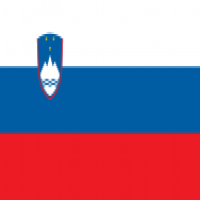Summary:
Researchers at a Slovenian research institute have discovered a new class of compounds for potential use in combinational chemotherapy treatments of cancer. Compounds display promising anticancer activity, along with a promise of an improved safety profile compared to established chemotherapeutics and they can be easily integrated into existing chemotherapy regimens. The partner sought is a pharmaceutical or biotechnological company for license and research cooperation agreement.
Description:
Slovenian research institute conducts basic and applied research oriented towards the fields of material and life sciences, biotechnology, chemical engineering, structural and theoretical chemistry, analytical chemistry and environmental protection. Several research projects are focused on the development of novel anticancer active ingredients. Researchers on these projects are experts in the field of computational biochemistry, computer-assisted drug design, and preclinical drug development.
Cancer is one of the most widespread diseases and the second leading cause of death, with the World Health Organization (WHO) reporting almost 10 million deaths annually. The human type IIα topoisomerase (“the enzyme” in further text) is a well-known and validated target for compounds used in cancer therapy. These are essential enzymes that regulate the DNA topology and chromosome organization.
Using computer-aided drug design, a new class of compounds suitable for cancer treatment has been identified and validated. These compounds, substituted bithiazoles, act as catalytic inhibitors of the enzyme. Extensive in vitro biochemical evaluations have determined that the mechanism of action differs from the one exerted by clinically used topoisomerase poisons. Bithiazoles bind to the enzyme’s ATPase domain and inhibit the enzyme via an ATP-competitive mechanism. The use of this alternative inhibition results in the absence of DNA damage, more precisely DNA double strand breaks (DSB), that relates to the serious side effects induced by known drugs acting on this target. Selected compounds also display promising cytotoxic activity on multiple cancer cell lines.
The partner sought is a pharmaceutical or biotechnological company. Research cooperation agreement is envisioned for the joint research and development on preclinical in vivo small animal trials and further steps of drug development. Additionally, license agreement will be signed with a partner, that will incorporate the active ingredient (drug substance) into a pharmaceutical form (drug product for cancer treatment) for peroral or intravenous application. End user, i.e. cancer patient, is expected to receive a dose of the pharmaceutical product at a prescribed therapeutic interval – take a pill or receive an intravenous injection.
Type (e.g. company, R&D institution…), field of industry and Role of Partner Sought:
The Slovenian research institute is interested in cooperation with pharmaceutical and biotechnological companies. Two different types of agreements are envisioned:
1. Research cooperation agreement for joint research & development, preclinical in vivo small animal trials, implementation of the technology and drug product development.
2. License agreement for the use of compounds in the drug product for cancer treatment.
The research institute is interested in cooperation with partners preferrably from European Union, United States of America, Canada, China, Japan and South Korea.
Stage of Development:
Prototype available for demonstration
Comments Regarding Stage of Development:
In vitro trials on selected compounds already performed; activity and improved safety profile established; next stage are preclinical in vivo trials on small animals.
IPR Status:
Secret Know-how,Patent(s) applied for but not yet granted
Comments Regarding IPR Status:
The patent application was filled to European Patent Office (EPO) and covers the EPO contracting states. It is still possible to extend patent application to other national phases.
External code:
TOSI20210928001








